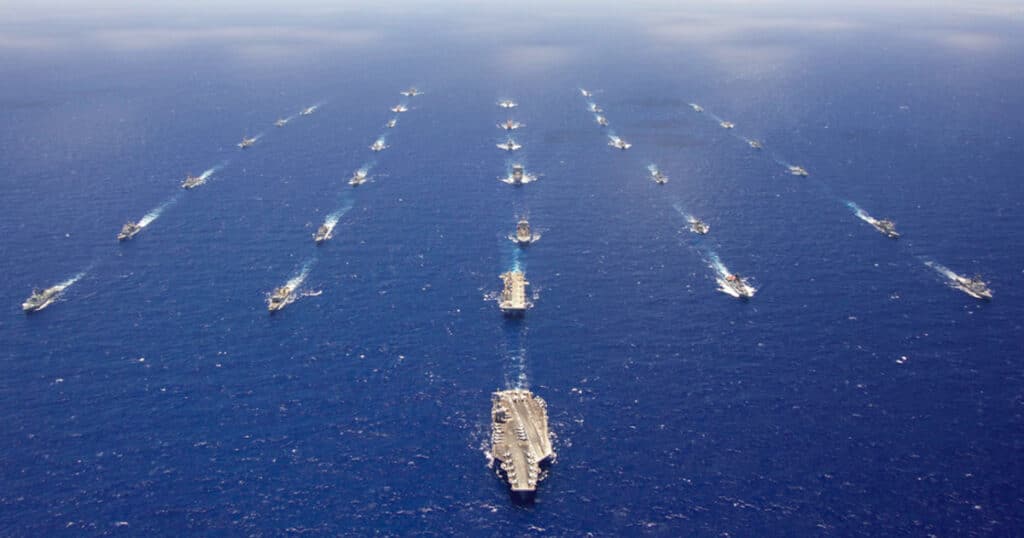
Navy Needs Shipyards to Protect America, and Gulf Coast Provides Options
China’s shipbuilding capacity dwarfs America’s.
According to the Pentagon, the Chinese navy will have constructed 440 warships by 2040. Meanwhile, the U.S. Navy is unlikely to meet its goal of 355 ships as a result of the severe limitations of current shipyards.
Today’s shipyards also are incapable of effectively maintaining the Navy’s current fleet. Existing proposals fall short of reversing the industry’s decline, which will require increased financial commitment in the defense budget.
Given its long history in the industry and skilled workforce, however, the Gulf Coast has great potential for expanded shipbuilding and ship maintenance.
Within the past few months, a leaked Navy briefing sounded the alarm on the increasingly vast gap between Chinese and American shipbuilding.
China’s shipbuilding capacity is 232 times greater than American shipbuilding, at 23.2 million tons compared with 100,000 tons, according to the briefing.
The briefing included projected sizes for both U.S. and Chinese “battle forces”—that is, the total number of “combatant ships, submarines, mine warfare ships, major amphibious ships, [and] large combat support auxiliary ships.”
By 2035, China is projected to field 475 warships while the U.S. will lag with a projected 305 to 317 warships (only a dozen or so ships more than the Navy’s current fleet).
This yawning chasm between our aspirations and our capabilities is a gap that must be addressed to ensure that the Navy is adequately prepared to meet the rising threat of China.
Our shipyards aren’t just insufficient for building new ships, they’re also unable to conduct maintenance on time, with ships sitting idle for years. From 2015 to 2019, for example, only five out of 33 submarines got maintenance conducted on time, and as a whole the submarine fleet faced 6,296 days of maintenance delays.
The Navy needs a new public shipyard. Its strategic plan to construct aircraft carriers and nuclear-powered submarines relies on expanding public shipyards. Both public and private shipyards are in use by the Navy, and both are necessary.
Public shipyards are critical, for example, because they can conduct maintenance on nuclear-powered ships such as aircraft carriers and submarines. But private shipyards also are needed to meet the needs of the Navy.
One promising location for a public shipyard is the Gulf Coast, the region along the Gulf of Mexico and an area with immense potential to serve as a hub for expanded shipbuilding. The benefits of shipyards include job creation, economic development, skills development, and infrastructure investment.
The lack of will lies in Washington, not on the Gulf Coast. The region—which includes parts of Florida, Alabama, Mississippi, Louisiana, and Texas—has a rich history of naval shipbuilding dating back to World War II in cities such as Houston, New Orleans, Pascagoula, Mississippi, and Mobile, Alabama.
This win-win scenario would provide the Gulf Coast with thousands of jobs while dramatically improving the Navy’s capability to build ships to defend the interests of the American people.
As Congress considers expanding America’s shipbuilding and maintenance capacity, it should keep the Gulf Coast in mind.


